
If you’re thinking of how to get started in videography, as a professional freelance videographer or one working for a video production company, you’re going to need to know a few basic things. Whether you’re in film school or simply making your own personal videos for your YouTube channel as a hobby, you need to first get a firm grasp of the basic skills needed to become a videographer. This includes familiarizing yourself with the video equipment you need to shoot, and the video editing software you’ll need to use. You’ll also need to know how to approach potential clients for work, and build your professional portfolio as you advance in your career.
Follow our beginner’s guide to videography to get an idea of what these skills are, and what type of gear you’ll be needing, from an entry-level camera to accessories. We’ll also give you an idea of what editing software can be used for making videos that look stunning and professional. Our beginner’s guide to videography will also give you a few tips on maintaining a high-quality video portfolio which will help you impress any potential customers that come looking for your services.
Beginner’s Guide On How To Get Started In Videography
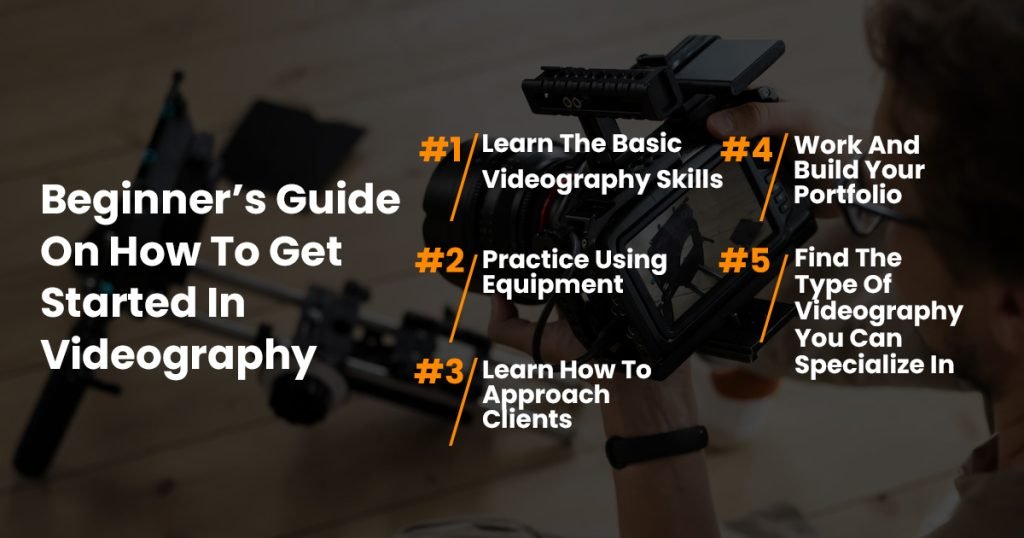
Whether you want to make a music video for a popular artist, wedding videos for a couple on their special day, or real estate videos that showcase a property, there is a process that many professional videographers have followed to become successful in this competitive industry. By following our beginner’s guide to videography, you’ll be creating videos that will be sure to impress your viewers.
Learn The Basic Videography Skills
The first step in any creative endeavor is to pick up the skill set that is required to get started. This means a firm understanding of concepts like lighting, frame rate, shutter speed, camera movements, composition, and framing. Some of these will feel familiar to you if you’ve been doing still photography. You could pay and attend a course, or find plenty of YouTube videos where you can learn the technical terms and how to put these skills into practice.
Many of these concepts may seem similar to what cinematographers in the film industry use, although there are some key differences. Where videography is about communicating a message to a target audience mostly for commercial reasons, cinematography is only concerned with telling a story that will keep the viewer entertained. To learn more about this topic, read Videography VS Filmmaking: How Different Are These Processes?
Practice Using Equipment And New Skills With Your Own Videos
The more equipment you practice with, the more your skills as a videographer will grow. Many videographers at the start will create videos on their own at home. This allows them to learn everything they need about their camera, its settings, and all the features at their disposal. Some budding young videographers even make their own short films. Concepts like lighting, exposure, and frame rate are best learned by doing an actual video shoot after sitting through a lecture.
Learn How To Approach Clients
This is something that those interested in becoming freelance videographers need to learn but will not be taught in any school or lecture. If you’re still at the starting point in your career, you may not have an extensive portfolio of work you have done for past clients. However, what you can do is shoot video with whatever equipment is available to you, whether it’s an action or sports camera or even a smartphone. You’d be impressed with what a good smartphone camera with image stabilization can achieve in the hands of a skilled videographer.
Using this footage, you can make a demo reel that you can keep for showcasing your talents if any opportunities come your way. Any videos you shoot can be uploaded to a social media platform like Facebook and Instagram, or a video platform such as YouTube. This is a great way to show what you’re capable of by sharing a link to your profile if any potential client requests to see your work. Furthermore, viewers impressed with your videography skills may even contact you directly to offer you work.
Find Work, And Build Your Portfolio
As you continue to work in videography, you’ll get a chance to provide your services to many types of clients in various industries. As you work with them, don’t forget to add the work you do to your portfolio. You could one day get a company website going where you can publish this work for the world to see. And of course remember that in some cases, you may need to get permission from your clients before publishing their videos on your website or social media. Make sure to carefully curate the selection of this portfolio with your finest videos, and take the time to update it as you get better at videography.
Find Which Type Of Advanced Videography Career You Wish To Pursue
At the start of your career, you may not know what type of videography career you wish to lead. You don’t have to be picky at the start and try out different fields which might interest you. After you dip your toes into many different types of videography, you will realize you prefer some over others. Find out where your passion lies and continue to advance.
There is the advertising video which is used to promote products and services, documentaries which are used to educate the viewer on a specific topic, and event videos which are used to cover special occasions like concerts. Corporate videos are used by a company to build its image for attracting investors or training its new employees. A record label may decide to shoot a music video for a popular song.
There is wedding videography which is increasingly growing in terms of the scale of production. Let’s also not forget the hospitality and travel industries which use the power of drone video footage to highlight their luxury resorts and tourist destinations. Furthermore, there are branded content videos that are done to establish a brand firmly in the marketplace. To learn more about the different options you will have, read The Different Types Of Video Production.
Beginner’s Guide To Videography Skills You Need To Create High-Quality Videos
We briefly mentioned the videography skills you will need to cultivate to advance in this field. This next part of our beginner’s guide to videography will touch on the type of skills you will need in a little more detail.
How To Do Lighting
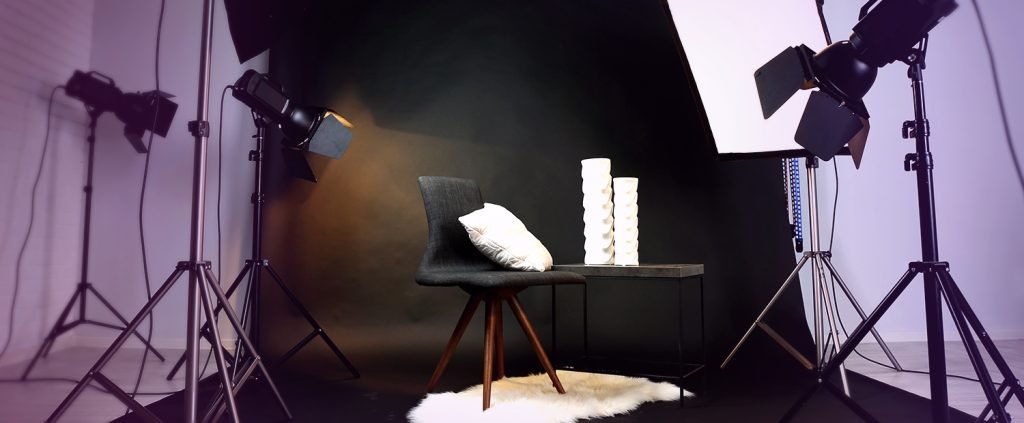
Image taken from www.manycam.com
Whether it’s taking photos or shooting video footage, lighting is one of the most important elements to consider. If you get this wrong, there’s not much you can do to your footage in the editing room to fix it. Lighting can set the mood, affect the tone of the story you are telling, and change how the audience feels. You need to understand all the different aspects of lighting like shadows, texture, contrast, and colors. The various objects and people within your frame will be affected by this.
You also need to be good at figuring out which lenses to use. A wide-angle lens will not be able to capture the same footage a telephoto lens can get. If it’s an outdoor shooting location, you will have to account for the ambient lighting present as well as the time of day and weather conditions. In a studio, you can always control the lighting but you still need to be skilled at manipulating the lights and other gear such as reflectors. For more on lighting, read Types Of Film Lighting – A Basic Guide For Video Lighting.
How To Select Aspect Ratios
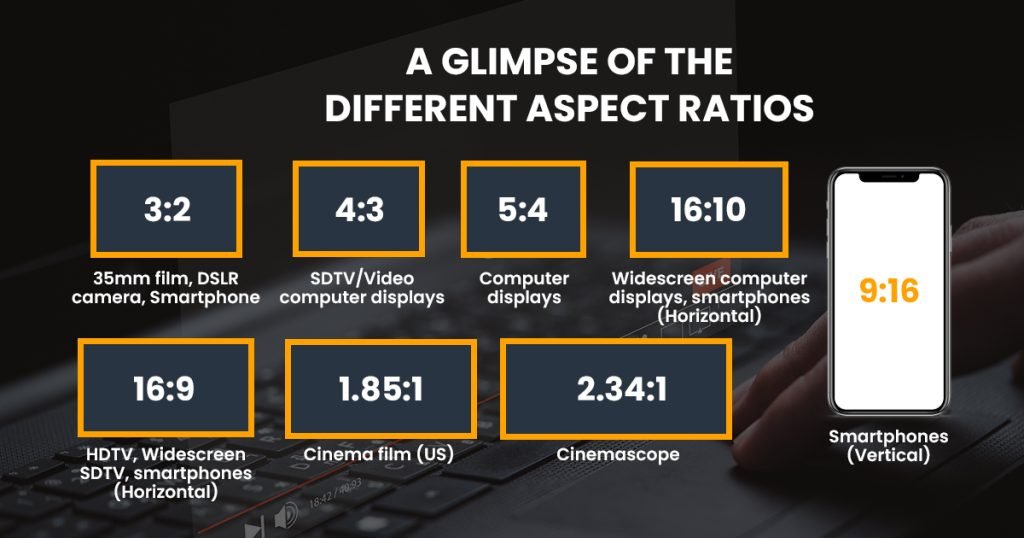
Image taken from www.muvi.com
The aspect ratio you use will depend on where you ultimately plan on publishing your video for the world to see. You need to consider whether your videos will be watched on a smartphone screen, on a television at home, or in a movie theater. There are industry-standard aspect ratios you will need to familiarize yourself with to ensure that the images you capture will not get cropped out when presented to the audience.
A widescreen television will need 16:9, and an Instagram video is usually watched vertically on a smartphone requiring 9:16. Even if you’re not making films for Hollywood, your videos may get played in a theater as a commercial before the movie starts. The industry standard for a video played in a movie theater could be 1.85:1 or 2.35:1 (cinemascope). You also need to learn how the different lenses will also affect this aspect ratio.
How To Adjust Camera Settings
You will need to know the camera settings if you’re going to get anywhere in videography. These settings need to be carefully chosen to suit the natural light that is present or the artificial lighting you’re adding to enhance the scene. You can reduce a lot of frustration in post-production if you take the time to learn all the settings, understand how they are related to each other, and how best to tweak them.
The light you capture with your camera is dependent on mainly three factors. The ISO level determines the level sensitivity of the camera’s image sensor, the shutter speed which is the amount of time light is captured, and the aperture which is basically the size of the iris that allows light into the camera. These three factors combined make what is known in the industry as the ‘exposure triangle’. They are interrelated, and videographers need to understand how to balance each one. This balance is the difference between a grainy or smeared video and a stunning work of art.
The frame rate is usually kept at about 24 frames per second, although you might need to use faster rates to capture video in slow motion. This might be required if you’re covering a sporting event or as a stylistic choice to tell your story and create impactful moments within your video.
Video Editing Software
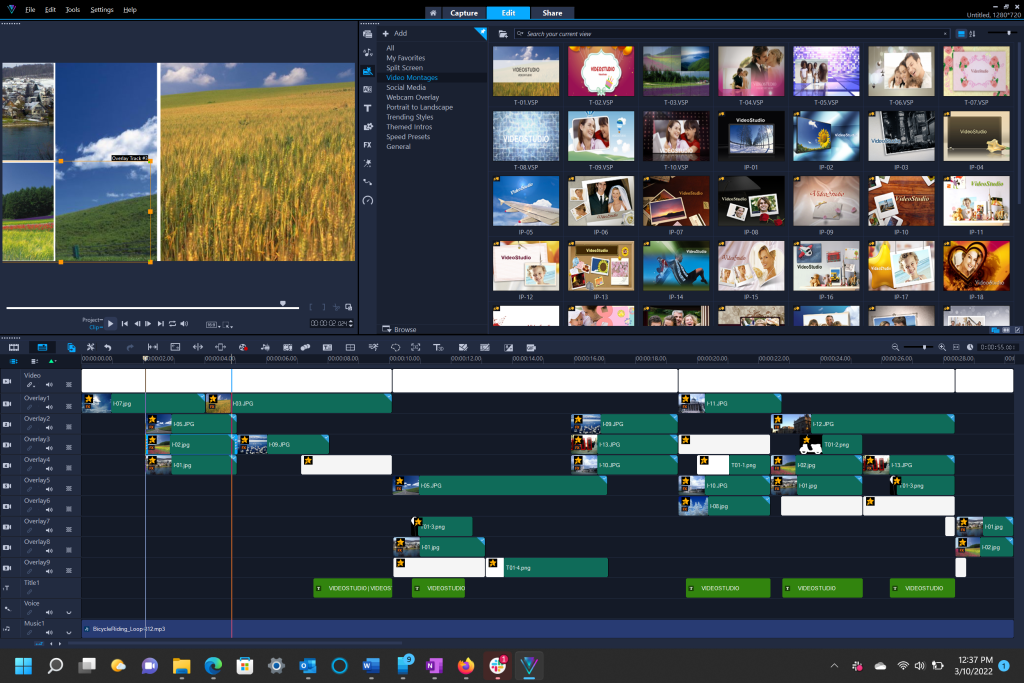
Image taken from www.i.pcmag.com
If you end up working for a video production agency, then editing will likely be handled by a separate person. If you’re a freelance videographer, you’ll need to know how editing software works. You need to be able to select between different types of transitions, and understand how to add elements like opening titles, music, sound effects, voice-over narration, and credits to bring your video to a finished state. Even if you’re not freelance, it would still be a great help if you understood how the editing process works. After all, you may still need to edit your own demo reel for your portfolio.
Beginner’s Guide To Videography Equipment And Editing Software You Need
In this section of our beginner’s guide to videography, we look at the different types of equipment you can start off with, the essential accessories you need to have, and the editing software that is available for you to use.
Choosing Your Video Camera
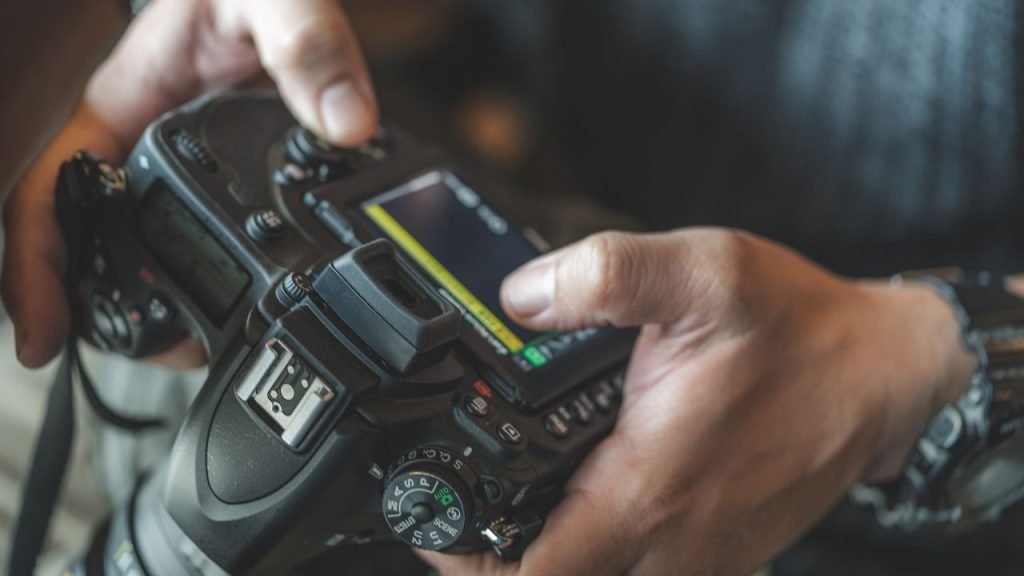
Image taken from www.media.cnn.com
The camera is of course the most piece of gear any videographer will own. Cameras nowadays come in all sorts of forms which means that anyone can get started and try their hand at videography without breaking the bank. Many smartphones today are incredibly versatile and would work in most situations where you’re making videos for platforms like Instagram or Tik Tok.
The next level is to get yourself a digital single-lens reflex (DSLR) camera which is fully capable of recording video footage on top of being useful for still photography. The great thing about these is the interchangeable lenses which you can swap out depending on the required application. Mirrorless cameras are the latest incarnation of the DSLR which provide better stabilization of the image and quieter operation since they have fewer moving parts inside them.
You may also be able to use point-and-shoot digital cameras and camcorders to record your videos. They are easier to operate, cheaper, and lighter than DSLR cameras. You will, however, not be able to tweak your settings to the level of a DSLR, nor be able to benefit from the wide variety of lenses you can swap out.
Finally, there are also the action cameras like those made by GoPro. If your content involves performing an action like skateboarding or riding a mountain bike, or surfing, then action cameras will be the most suitable for your project. It’s best to start your videography journey with one of these cameras before purchasing an expensive professional-grade camera that requires a small team to operate.
The Camera Accessories
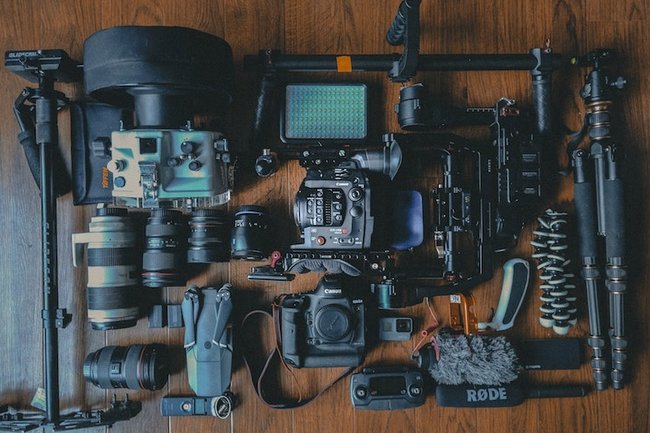
Image taken from www.pixpa.com
When you head out for a shoot, you will need to pack a few key items in your camera kit. Your tripod is what allows you to set your camera in a stable position, and the lighting gear which includes lights as well as reflectors will help you adjust the lighting to your preference. If you’re planning to record dialog for an interview or capture sounds from the natural environment, you may also need a good microphone. And finally, don’t forget to keep a few extra batteries and memory cards in case you end up shooting longer than you anticipated.
Selecting The Editing Software
There are many options you can look into when choosing editing software. There’s the one most professionals use like Adobe Premier and Final Cut Pro for Apple users. This type of software is the most comprehensive and comes with the latest features, although they aren’t exactly cheap. CyberLink PowerDirector, Corel VideoStudio, and Apple iMovie offer more affordable options for beginners.
Do You Want To Learn More About Videography?

Now that we’ve come to the end of this beginner’s guide to videography, you would have a decent understanding of how to get your career started, what equipment you will need, and which skills you need to cultivate. If you wish to learn more about videography and photography, you can visit our blog at SUJO Twenty-Two where we cover many related topics.
Our team has years of experience providing photography and videography services to clients in various fields like tourism, restaurant, hospitality, and real estate. If you wish to learn more about our services, visit SUJO Twenty-Two today!
FAQs
Videography is the act of capturing videos that are often designed to communicate a message to a target audience. In some cases, it is done merely to capture what happens at an event like a wedding or concert. User-generated video content on social media that is captured using smartphones is also an example of videography being used, although many of them are not aware of this.
Cinematography is more of an artistic endeavor where conveying the themes of the story is important. Videography may also communicate a message, although this is more commercial in nature, and the medium is used to convince the audience to purchase a product or service.
You can get started in videography by learning the basic skills needed to use video equipment, as well as taking the time to understand essential technical concepts like lighting, framing, and aspect ratios. After you practice and get better, you can start approaching clients and building up a portfolio of work that will help you advance in this career.



